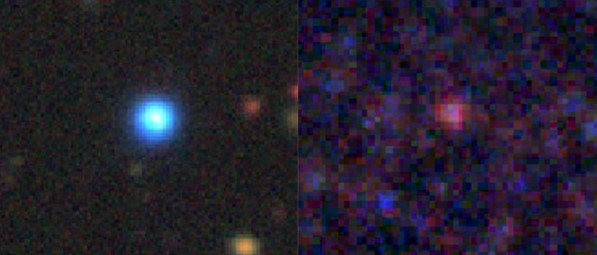'Cold Quasars' May Be at the End of Their Lives, But They Can Still Birth Stars

Building a quasar, the brightest type of object in the universe, usually signifies an end of star-formation in a galaxy. Now, new research suggests that some galaxies may continue to birth new stars longer than expected after a quasar cuts off their supply of gas.
Using observations gathered with the European Space Agency's XMM-Newton Telescope, astronomers in ongoing research revealed the additional blip in the life story of these galaxies. They suspect that the unexpectedly late star formation could be possible in all types of galaxies.
"We already knew quasars go through a dust-obscured phase … a heavily shrouded phase where dust is surrounding the supermassive black hole," lead researcher Allison Kirkpatrick, an astrophysicist at the University of Kansas, said in a statement. Kirkpatrick and her colleagues studied several intriguing quasars in the X-ray and far-infrared spectra to find quasars that hadn't lost all of their dust. "Now we've found this unique transition regime that we didn't know [about] before," she said.
Kirkpatrick is calling the new class of objects "cold quasars." She presented her results on June 12 at the 234th semiannual meeting of the American Astronomical Society in St. Louis.
Related: In Photos: Universe's Expansion Revealed by Quasars & Cosmic Lenses
A brief transition
Quasars, or "quasi-stellar radio sources," form when material falling into the supermassive black hole at the center of a galaxy creates an accretion disk. The disk casts off an enormous amount of electromagnetic energy, often making the black hole shine even brighter than its galaxy.
As the infalling gas reaches speed near the speed of light, the magnetic field around the gas can also get twisted up. Jets of material can shoot through the twisted field lines, choking off the galaxy's gas supply and keeping more gas from falling onto it. Without gas, the galaxy can no longer form new stars, and becomes a passive dead galaxy.
Breaking space news, the latest updates on rocket launches, skywatching events and more!
That's why astronomers have worked from the premise that quasars marked galaxies that had aged out of star formation.
But Kirkpatrick and her colleagues began to question that as their data came together. The process began when they identified several intriguing quasars in the Sloan Digital Sky Survey, the most detailed digital map of the universe.
They decided to rope in data from other instruments as well, first the XMM-Newton telescope that can detect the X-rays that are a key signature of growing black holes. Then the astronomers used data from the Herschel Space Telescope, a far-infrared instrument, to detect dust and gas in the host galaxy.
Combining all those data sources, the scientists' investigation revealed that about 10% of galaxies with accreting supermassive black holes still held onto a supply of cold gas and made new stars.
"That in itself is surprising," Kirkpatrick said.
All told, the objects the team studied ran the gamut of galactic types. Some looked like the Milky Way, with obvious spiral arms, while others were very compact. Still others showed signs of merging with another galaxy. And they all maintained an unexpected supply of cold gas.
"These galaxies are rare because they are in a transition phase — we've caught them right before star formation in the galaxy is quenched," Kirkpatrick said. She estimated that the phase lasted only about 10 million years, a blink of an eye in the 13.8 billion-year lifetime of the universe. "It's hard to catch these things," she said.
The team's next step will be to try to determine whether only certain types of galaxies retain cold gas at the end-stage of their life, or if it's something that happens to all galaxies.
- NASA's Chandra Space Telescope Captures the Tempest in a Cosmic 'Teacup'
- Behold the Mighty Quasar: The Science Behind These Galactic Lighthouses
- Monster Black Hole 'Feeding Frenzy' Hides Hundreds of Galaxies in New Photo
Follow Nola on Facebook and on Twitter at @NolaTRedd. Follow us on Twitter @Spacedotcom and on Facebook.

Nola Taylor Tillman is a contributing writer for Space.com. She loves all things space and astronomy-related, and always wants to learn more. She has a Bachelor's degree in English and Astrophysics from Agnes Scott College and served as an intern at Sky & Telescope magazine. She loves to speak to groups on astronomy-related subjects. She lives with her husband in Atlanta, Georgia. Follow her on Bluesky at @astrowriter.social.bluesky

